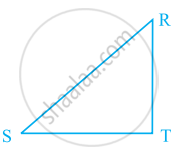Advertisements
Advertisements
Question
ABCDE is a pentagon in which AB is parallel to DC and ∠A : ∠E : ∠D = 1 : 2 : 3. Find angle A.
Solution
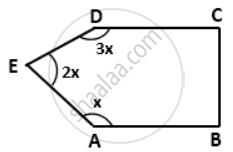
Given AB || DC
⇒ ∠B + ∠C = 180°
Also,
∠A : ∠E : ∠D = 1 : 2 : 3
⇒ ∠A = x, ∠E = 2x and ∠D = 3x
Since,
∠A + ∠B + ∠C + ∠D + ∠E = (5 - 2) x 180°
⇒ ∠A + (∠B + ∠C) + ∠D + ∠E = 3 x 180°
⇒ x + 180° + 3x + 2x = 540°
⇒ 6x + 180° = 540°
⇒ 6x = 360°
⇒ x = 60°
Hence,
∠A = 60°.
APPEARS IN
RELATED QUESTIONS
In Fig. 16.19, ABCD is a quadrilateral.
How many pairs of adjacent sides are there?
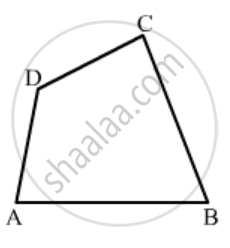
In Fig. 16.20, find the measure of ∠MPN.
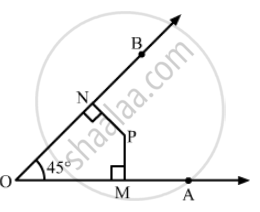
Complete the following statement by means of one of those given in brackets against each:
If in a quadrilateral only one pair of opposite sides are parallel, the quadrilateral is ................
Use the information given in the following figure to find :
(i) x
(ii) ∠B and ∠C
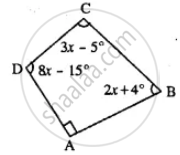
In quadrilateral ABCD, side AB is parallel to side DC. If ∠A : ∠D = 1 : 2 and ∠C : ∠B = 4 : 5
(i) Calculate each angle of the quadrilateral.
(ii) Assign a special name to quadrilateral ABCD
Observe the figure below and find out their name.
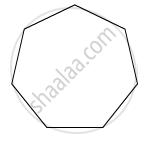
ABCD is a rhombus such that ∠ACB = 40º. Then ∠ADB is ______.
ABCD is a quadrilateral in which AB || DC and AD = BC. Prove that ∠A = ∠B and ∠C = ∠D.
The number of right angles in a straight angle is ______ and that in a complete angle is ______.
Using the information given, name the right angles in part of figure:
RT ⊥ ST